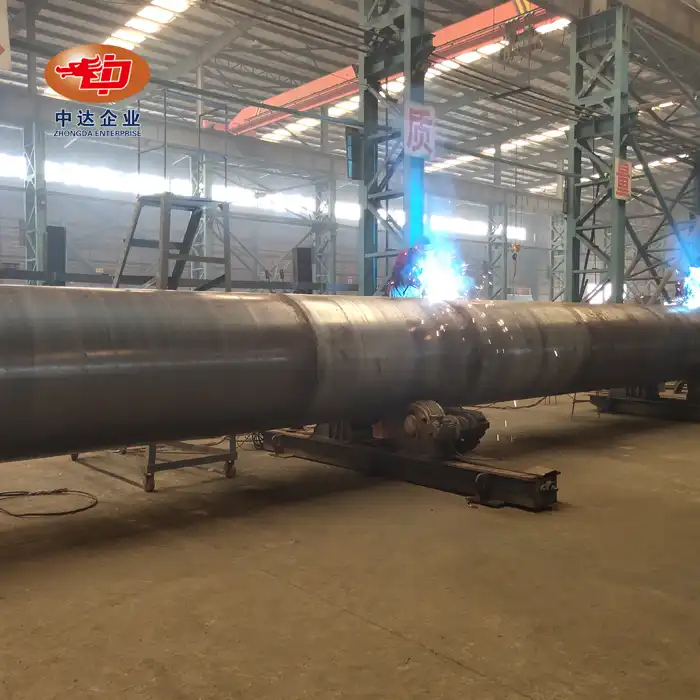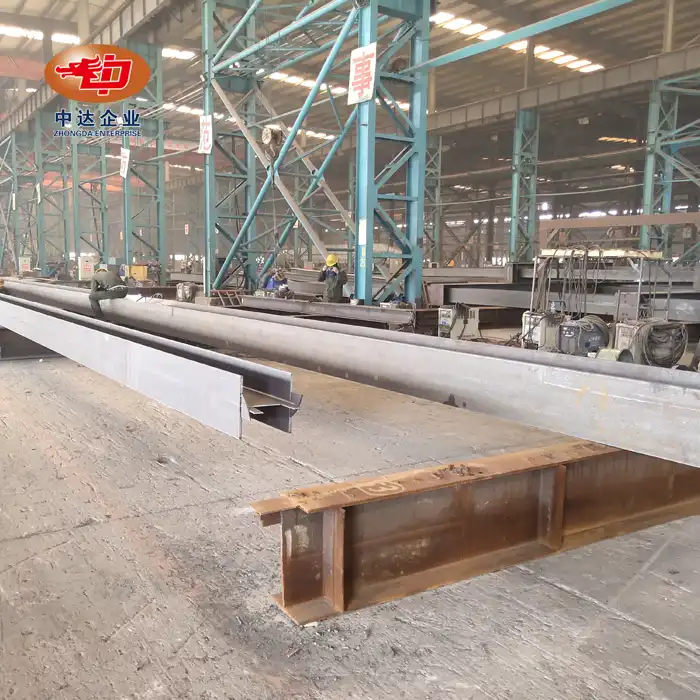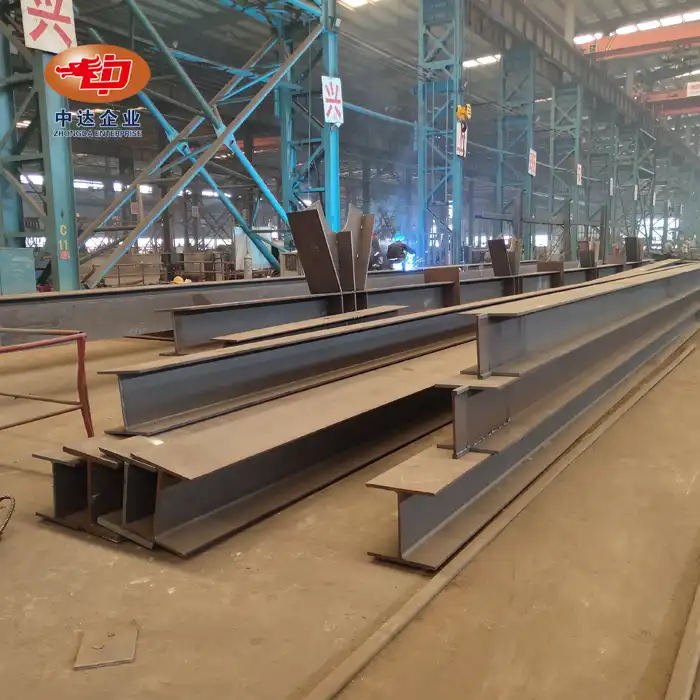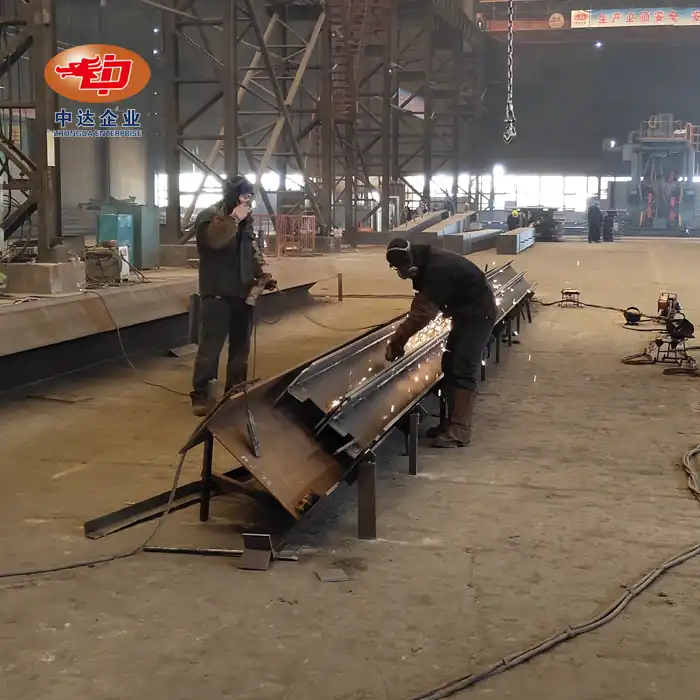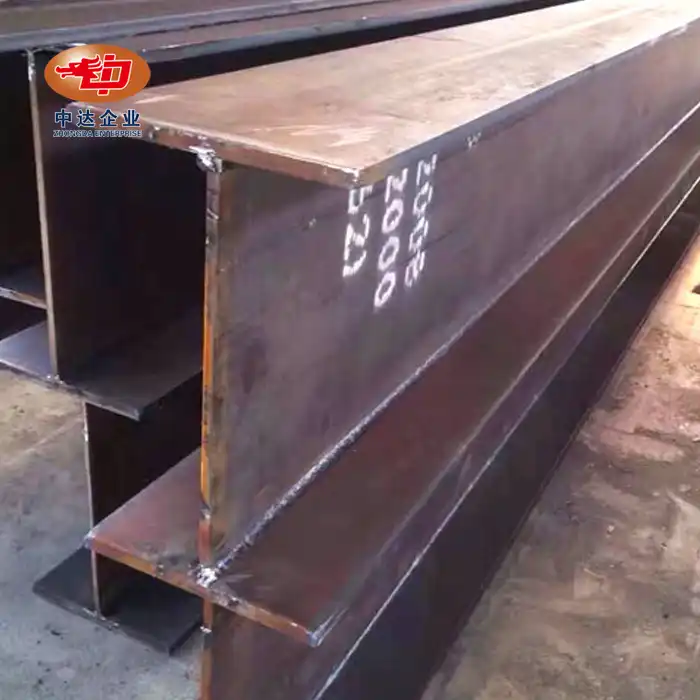
Do Anti-Corrosion and Fire Protection Measures Affect Box Column Dimensions?
Yes, anti-corrosion and fire protection measures do impact box column dimensions, often increasing their size to accommodate protective layers. Fire barriers, such as intumescent coatings or encasements, can add 5%-10% to the column's cross-sectional area, requiring extra space in the design phase. Anti-corrosion treatments, like galvanizing or specialized coatings, may also necessitate slight dimensional adjustments to ensure structural integrity. These modifications enhance safety and durability, particularly in high-rise structures, but they demand careful planning to balance spatial constraints with performance requirements. At Zhongda Steel, we specialize in tailoring box-section solutions to seamlessly integrate these protective measures without compromising design efficiency.
Understanding the Role of Box Columns in High-Rise Structures
Box columns, often referred to as box-sections for high-rise columns, are the backbone of modern skyscrapers and industrial facilities. Their hollow, square, or rectangular design provides exceptional strength and stability, making them ideal for supporting immense loads and resisting lateral forces like wind and seismic activity. But as safety standards evolve, additional protective measures are required to ensure these structural elements perform under extreme conditions. This raises an important question: how do anti-corrosion and fire protection measures influence the size and design of these critical components?
Why Box Columns Are Essential for High-Rise Construction?
The unique geometry of box columns offers superior load-bearing capacity compared to traditional I-beams or H-sections. Their closed shape enhances torsional rigidity, which is vital for tall buildings exposed to dynamic forces. Zhongda Steel's box-sections, crafted from premium Q345C steel, are designed to meet the rigorous demands of super high-rise core tubes and heavy industrial columns, offering seismic resistance up to Grade 8. The ability to customize dimensions - ranging from 200×200mm to 600×600mm with wall thicknesses of 10-40mm - ensures they fit seamlessly into diverse project specifications.
Challenges of Integrating Protective Measures
While box columns are inherently strong, they are not immune to environmental hazards like corrosion or fire. Corrosion can weaken steel over time, especially in harsh climates, while fire poses a significant risk to structural integrity during emergencies. Addressing these challenges requires adding protective layers, which inevitably impacts the overall dimensions of the column. Developers and designers must account for these changes early in the planning process to avoid costly redesigns or spatial conflicts later on.
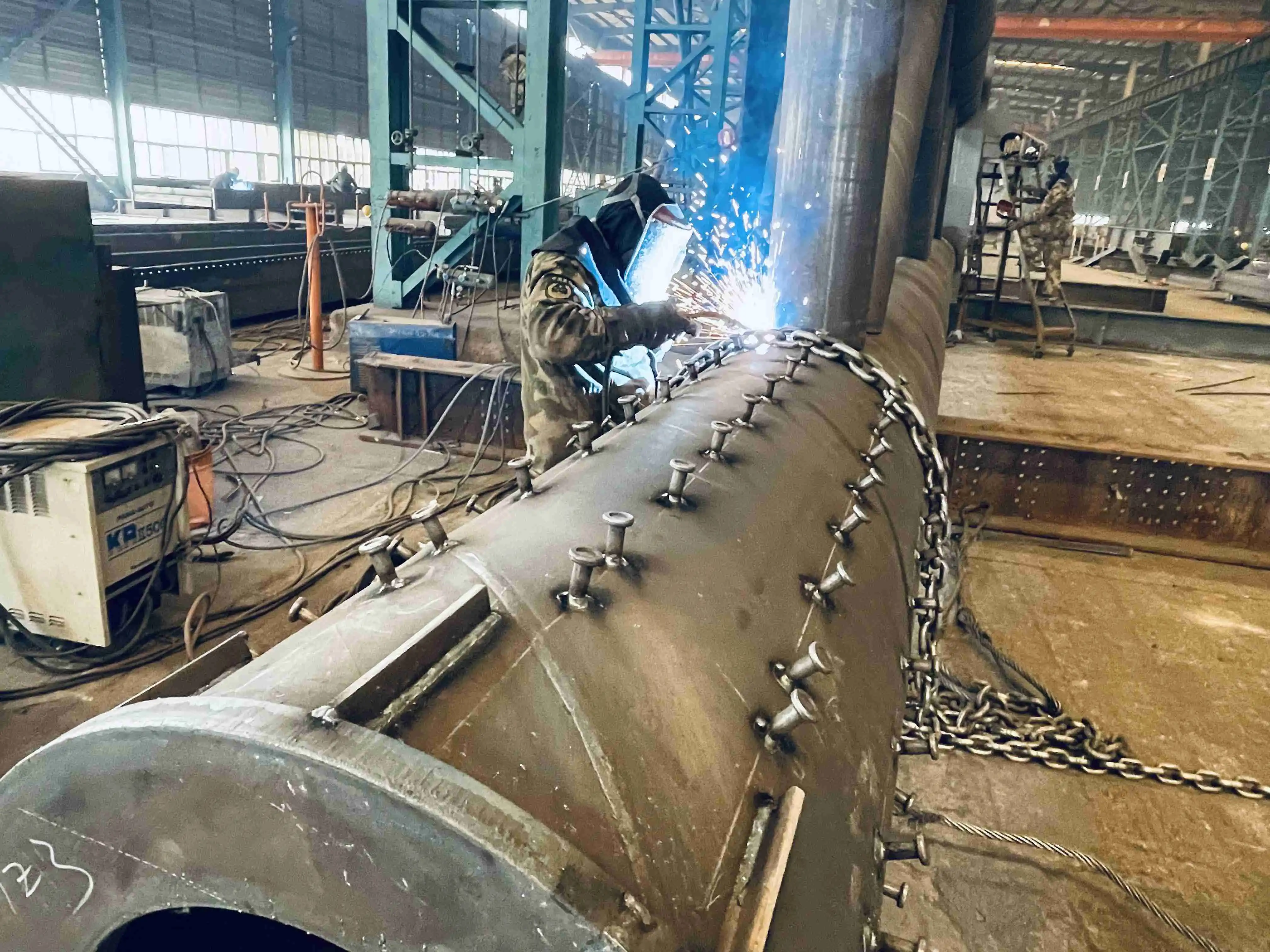
Balancing Safety and Spatial Efficiency
The addition of protective measures often increases the cross-sectional area of box columns, which can affect floor plans, aesthetic designs, and material costs. The key is to strike a balance between safety and efficiency. At Zhongda Steel, our engineering team collaborates closely with clients to develop optimized solutions, such as concrete-filled box-sections for enhanced fire resistance or specialized coatings for corrosion protection, ensuring that safety enhancements don't compromise the project's vision.
How Anti-Corrosion Measures Influence Box Column Dimensions?
Corrosion is a silent threat to steel structures, particularly in environments exposed to moisture, salt, or industrial pollutants. Protecting box columns from corrosion is essential to ensure their longevity and performance, but these protective measures can subtly alter their dimensions. Let's explore how this happens and what it means for your project.
Types of Anti-Corrosion Treatments for Box Columns
Several methods are used to shield steel box-sections from corrosion, each with its own implications for design. Galvanizing, which involves coating the steel with a layer of zinc, adds a thin but measurable thickness to the column's surface. Epoxy or polyurethane coatings provide another layer of defense, often requiring multiple applications to achieve the desired durability. Zhongda Steel's advanced -60°C Weathering Steel Anti-corrosion Technology offers a cutting-edge solution, allowing box columns to withstand extreme environmental conditions without significant dimensional changes.
Dimensional Impacts of Anti-Corrosion Layers
The thickness added by anti-corrosion treatments is typically minimal - often in the range of micrometers to a few millimeters - but it must be factored into the box column's overall dimensions. In high-rise construction, where precision is paramount, even small increases can affect connections, cladding, or spatial layouts. Designers must also consider the long-term performance of these coatings, as wear or damage over time may necessitate thicker initial applications to ensure sustained protection. Zhongda Steel's expertise in ultra-thick plate cutting (±0.2mm precision) ensures that any dimensional adjustments are executed with unparalleled accuracy.
Designing with Anti-Corrosion in Mind
To mitigate the impact of anti-corrosion measures on box column dimensions, proactive design strategies are essential. This includes selecting the most efficient coating systems, optimizing column geometry to minimize surface area exposure, and integrating protective measures into the initial structural calculations. Zhongda Steel's BIM-driven prefabrication capabilities allow us to model these factors digitally, ensuring that every box-section for high-rise columns is tailored to meet both safety and spatial requirements. Our OEM and ODM services further enable custom solutions, such as specialized coatings, to fit your project's unique environmental challenges.
The Impact of Fire Protection on Box Column Dimensions
Fire safety is a top priority in high-rise construction, where the consequences of structural failure can be catastrophic. Box columns, as critical load-bearing elements, must be protected against fire to maintain their strength and stability during emergencies. However, these protective measures often have a more pronounced effect on dimensions compared to anti-corrosion treatments. Let's break down how fire protection influences box column design and how to manage its implications.
Fire Protection Methods for Box Columns
Fire protection for box columns typically involves adding insulating materials to delay the transfer of heat to the steel, which can lose strength at high temperatures. Intumescent coatings, which expand when exposed to heat, form a protective char layer around the column, adding a variable thickness depending on the required fire rating. Alternatively, encasements - such as concrete or gypsum board - provide robust protection but significantly increase the column's cross-sectional area, often by 5%-10%. Zhongda Steel's concrete-filled box-sections offer an innovative solution, combining structural strength with inherent fire resistance.
Dimensional Changes Due to Fire Barriers
The most significant dimensional impact comes from fire barriers, particularly encasements. A 5%-10% increase in box column size may not sound substantial, but in a high-rise building with dozens of columns, this can translate to a loss of valuable floor space or require adjustments to architectural designs. Intumescent coatings, while less invasive, still add thickness that must be accounted for in tight tolerances. Designers must also consider the weight of these protective layers, as increased mass can affect load calculations and foundation requirements. Zhongda Steel's internal stiffeners enhance the rigidity of box columns, ensuring they can support these additional loads without compromising stability.
Strategies to Optimize Fire-Protected Box Columns
Managing the dimensional impact of fire protection requires a holistic approach to design and construction. One strategy is to integrate fire resistance into the column's core design, such as using concrete-filled box-sections, which eliminate the need for external encasements. Another approach is to select high-performance intumescent coatings that provide adequate protection with minimal thickness. Zhongda Steel's engineering team excels in developing such optimized solutions, leveraging our state-of-the-art facilities to fabricate box-sections for high-rise columns that meet stringent fire safety standards while preserving spatial efficiency. Our EN10219 certification and compliance with EU welding standards further ensure that every product delivers uncompromised quality.
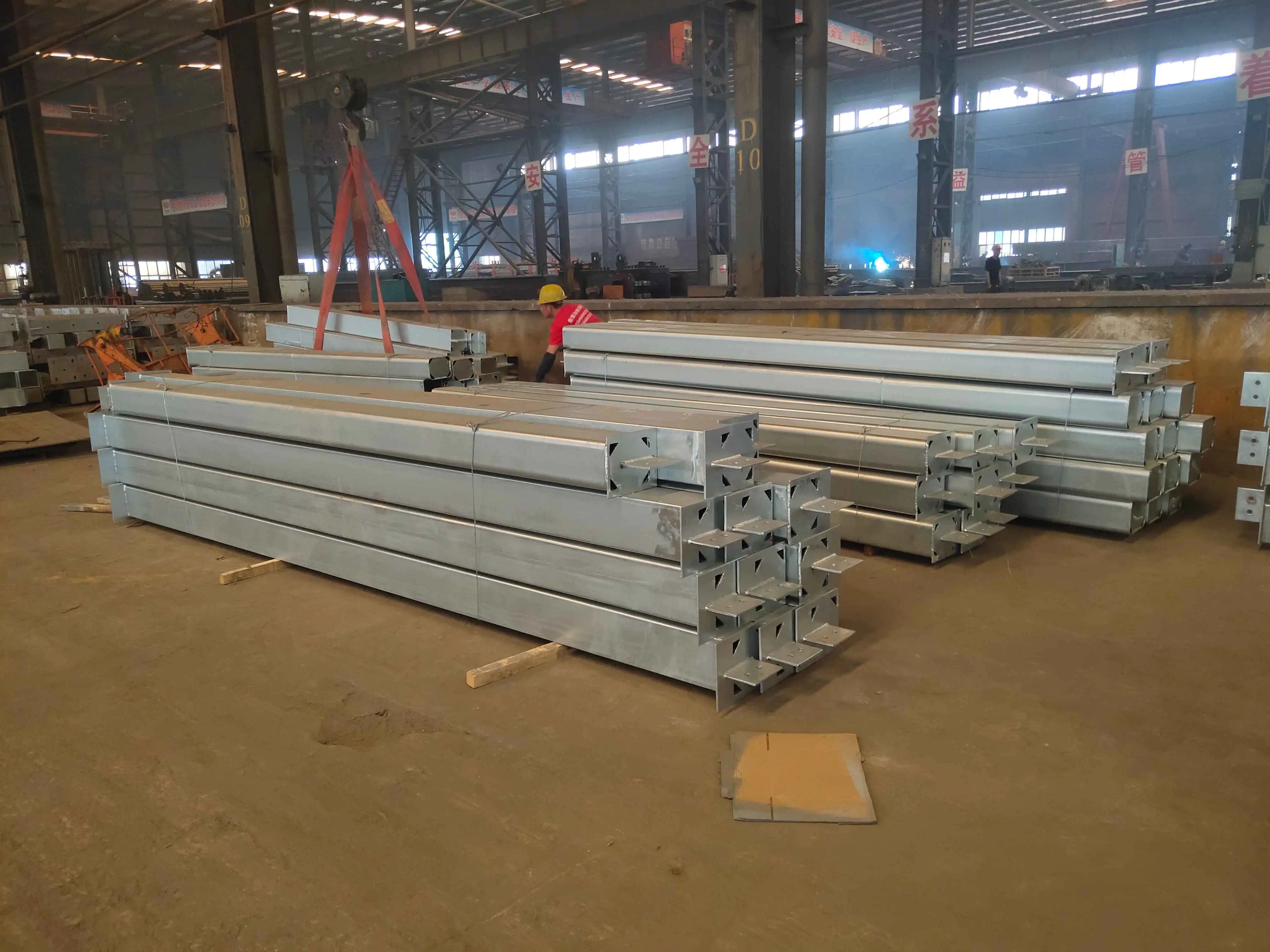
Conclusion
Anti-corrosion and fire protection measures do affect box column dimensions, but with careful planning and innovative solutions, these impacts can be managed effectively. By integrating protective layers into the design process, developers and designers can ensure safety without sacrificing efficiency. At Zhongda Steel, we specialize in crafting box-sections for high-rise columns that balance durability, safety, and spatial constraints, helping you bring your vision to life.
Contact Us
Ready to elevate your high-rise or industrial project with precision-engineered box-section for high-rise columns? Zhongda Steel offers unparalleled expertise, customization, and quality, ensuring your structural components meet the highest safety and performance standards. Contact us today at Ava@zd-steels.com to explore tailored solutions and benefit from our comprehensive technical support.
References
Smith, J. (2020). Structural Steel Design: Fire Protection and Corrosion Resistance. Engineering Press.
Lee, H. & Park, S. (2019). Advanced Coating Technologies for Steel Structures. Materials Science Publications.
Kumar, R. (2021). Seismic and Fire-Resistant Design of High-Rise Columns. Construction Innovations Journal.
Zhang, L. (2018). Dimensional Analysis of Protective Layers in Steel Columns. International Journal of Structural Engineering.
Brown, T. (2022). Optimizing Steel Box-Sections for High-Rise Applications. Global Construction Review.
Chen, Y. (2020). Environmental Impacts on Steel Structures: Corrosion and Fire Mitigation. Steel Technology Digest.










